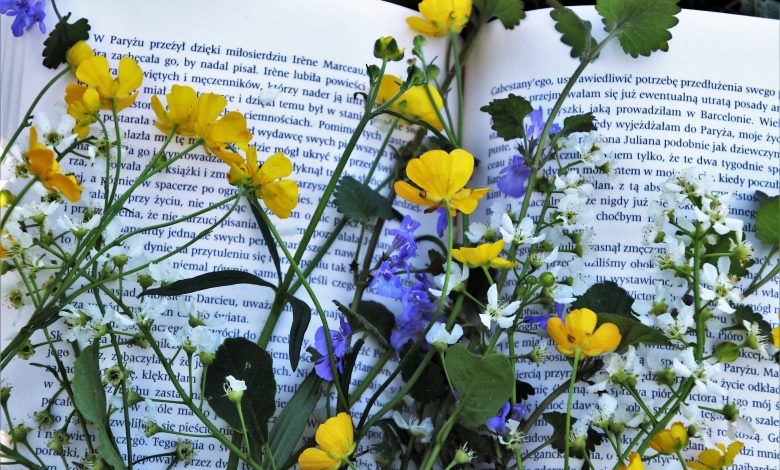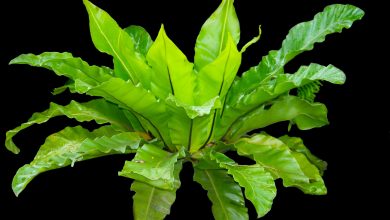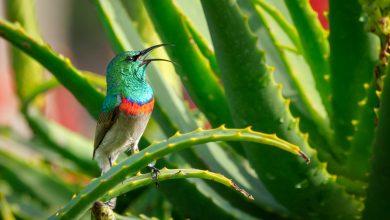The Language of Flowers

Flowers are more than just a pretty thing to look at. Nature comes with its own culture, its own hidden meanings and messages – its own language.
Of course, it’s down to humans to interpret that, and we have. Throughout history, certain flowers have picked up meanings and symbols that go beyond something that simply looks nice. Take roses, for example; you get roses for a lover, not a friend. It’s a clear example of a flower with extra meaning.
It’s not the only one, though. Flowers with more sinister connotations have been used in the past as threats, by members of royalty, and as foreshadowing devices in fiction.
The history of flowers taking on symbolic gestures goes back as far as the ancient Greeks. The Egyptians and the Chinese also had their own interpretation of the plants native to their respective homelands. This is evident by the presence of such flowers in old sonnets, plays, and folklore, a literary practice that even William Shakespeare adopted.
The popularity of flower symbology among royalty and nobility hit its peak in 1800s Victorian England. Guidebooks on how to decipher and interpret flowers were published, and almost every notable household had one.
The symbolism went beyond just the type and color of the flower, though. A method of saying yes or no with flowers was popularized. If a person handed flowers over with their right hand, it symbolized yes. Meanwhile, if they used the left, it was a no.
Furthermore, flowers that were given upside down expressed the opposite of what the flower traditionally meant. A flowers ribbon was used as a type of makeshift address, too. If a ribbon was tied to the left, the symbology applied to the giver, whereas if it was tied to the right, the message fell on the receiver.
The language is very intricate. As you’ve seen, it’s not just the species of flower that matters. Every little detail implies something else, all the way down to the color of the flower.
Roses
The red rose is a well-known symbol of love, desire, and affection, but the white rose represents innocence and purity, which is quite the opposite of the pursuit of carnal pleasures that the red one indicates.
A darker crimson shade of rose is for mourning, whereas a pink rose is for happiness and joy. Yellow is jealousy and infidelity, and orange is desire.
For two more unknown shades of rose, lavender represents being smitten with someone at first sight, and coral means friendship and modesty.

Snapdragons
As its namesake implies, snapdragons are flowers with an aggressive message behind them. Despite its innocent-looking appearance, the flower represents deception.
Salvia
Salvia is another flower with different meanings for different colors, although all of them are positive and romantic. Blue means that the recipient is in your thoughts; red means that you cherish them forever.
Edelweiss
You may know this flower from The Sound of Music, but do you know the hidden meaning behind it? Edelweiss grows well under harsh alpine conditions, so it represents courage and devotion.
Amaryllis
If you’ve ever seen one of these mammoths, then you may already know its symbolic meaning. The flower has a massive, obtrusive flowerhead, and that flowerhead stands for pride. Quite fitting, given the appearance of the flower.
Myrtle
Myrtle is traditionally a wedding flower, and for good reason. Added to a bridal bouquet, this flower represents love and good luck in marriage.
Magnolia
Magnolias bloom right as spring begins to start. It serves as a way for nature lovers to read the natural calendar and get excited for the new year. So it’s only natural that the flower stands for a love of nature.

Dahlia
Despite most people having a negative view of this plant on account of the Black Dahlia, these flowers actually represent dignity and pomp.
Lemon Balm
Lemon Balm makes a fantastic cup of tea that can soothe the spirit. Perhaps that’s why the plant stands for sympathy, as its tea is a perfect pick me up for someone who is feeling down.
Rosemary
In traditional folk medicine, rosemary is said to enhance memory. It is brewed in teas and worn as ornaments in hair to enhance people’s ability to remember things. So naturally, it symbolizes remembrance.
Hibiscus
The hibiscus flower is actually the flower that you see in a lot of Hawaiian hula designs. It tastes delicious when used properly in desserts and represents a delicate beauty.
Sunflower
Perhaps one of the world’s most well-known flowers, the sunflower represents false riches. There is actually an interesting origin to this meaning. When Spanish explorers first landed on the Americas, they believed the flowers to be made out of real gold — not the brightest bunch.
Red Tulips
Red tulips are similar to roses in meaning, except the flower is used specifically as a declaration of love. Of course, it is a language, and interpretation of the meanings is subjective, so you can use them as a much more affordable alternative to red roses if you want to surprise your significant other and not break the bank.

Daisy
Everyone knows daisies. The flower grows everywhere and is a staple indicator that summer has come. Daises are small, cheery, and cute, and can also be made into bracelets. So it’s only fitting that they represent innocence.
Pansy
Pansies are a common funeral flower, perhaps first being used due to the somber, mournful color of the flowerhead. As a result, it has come to represent remembrance.
Lavender
Lavender isn’t just for making your clothes smell good. The flower can also be cute and given in a bouquet to show devotion. It also has aromatherapy applications for people suffering from stress, so it can make for a doubly good gift.
Chrysanthemum
Chrysanthemum somehow manages to just look earnest in nature. Its pink color with hints of white and fluffy looking flowerhead exude a sense of honesty, which is exactly what this flower means.
Black-Eyed Susan
This eccentrically named plant is one of the ones that has its roots in old literature – a poem of the same name, by John Gay, specifically. From that poem, the flower gained the symbolism for meaning justice.
Daffodil
Daffodils are another flower used in artistic fashions. Often times ,it represents a character entering pastures new, or a journey to an unfamiliar place. In theme with that, the flower represents new beginnings.
Basil
Basil is not exactly a flower, but neither is lemon balm. The herb smells and tastes great. It’s a staple in many Italian dishes, and you can’t make a proper marinara sauce without it. Despite that, the plant actually represents hate. Who would’ve guessed it?
Lilac
Lilacs come in various shades of purples and violets, and the hue of the plant can slightly alter its meaning. A lilac that is purple signifies a sort of puppy love, the first stage of a relationship, and so on, where magenta symbolizes a more mature passion.

Peony
Peonies are bright, large, and pompous. Despite this, it is quite a beautiful flower that looks great in a bouquet, which is why it might surprise you that this plant actually symbolizes anger.
Lily of the Valley
These dainty little flowers just look harmless, with their single bulb-like white flowerhead hanging like a head bowed. It might be this characteristic that earned them the honor of representing humility.
Morning Glories
Morning Glories are a staple of many a gardener’s, well, garden. The flowers rise with the early morning sun; you could almost say that it shows affection for it, which is what this flower means.
Purple Crocus
These flowers are one of the first to bloom after the last frost, at the start of spring. It represents the start to the new year, and as such, symbolizes youthfulness.
Chamomile
Chances are you’ve heard of chamomile before. The flower has been made quite famous by the popularity of chamomile tea. It gives us feelings of respite and relaxation and allows us a moment to collect ourselves and get ready to face what challenges life may throw at us. In that spirit, the flower symbolizes energy in adversity.

Red Poppy
The red poppy is an internationally famous flower, on account of the British wearing it on Veterans Day. The reason they wear it is because it represents remembrance, so they remember their honored dead that died in military service.
Purple Hyacinth
This one is really interesting. Have you ever heard the old myth about how Apollo killed Hyacinthus? The flower was named after that tale and is a way to ask for forgiveness. Pretty fitting.
Yarrow
Here’s one you might not expect. Yarrow isn’t exactly the prettiest flower in the garden. It’s wiry, doesn’t have a lot of bloomage, and looks a bit like a weed. Despite this, the flower is actually a symbol of love. Although, you’re better off leaving this one out of the bunch on Valentine’s Day.
Forget Me Not
Do you really need an explanation for this one?
Anemone
These tragic little flowers are not suited to our world. The poor things have short lives and have come to, fittingly, represent fragility.
Rhododendron
This flowers name sounds like a shaman trying to conjure a curse, and rightfully so because it’s deadly poisonous. The flower adopted the meaning of beware because of this.
Tansy
These bumblebee hued flowers have quite the statement attached to them. Somehow, throughout the ages, it began to symbolize a declaration of war. Definitely not a flower you want to get delivered.
Verbena
Verbena has its origin stuck deep within historic religious connotations. The flower took on the meaning of praying for someone as a result.
White Clover
You would give these strange looking little flowers to someone if you wanted to tell them that you are thinking of them — a nice gesture, but not the nicest looking flower.
Violet
Violets are some of the most stunningly beautiful flowers that a humble gardener can grow. It represents loyalty and devotion — a fitting symbol for such a regal plant.

Camellia
These flowers are equally as gorgeous as violets, but the meaning behind them is infinitely more poetic. It carries the romantic statement of telling someone that your destiny is in their hands. It’s a gift that would make even Aphrodite swoon.
Hyssop
This rod-looking plant means sacrifice.
White Jasmine
White jasmine is a key ingredient in many modern and traditional perfumes. Its sweet and sultry aroma may be what gave it the symbology of meaning sweet love.
Cornflower
These common little blue gems have been used as a good luck charm in the past and still carry that sentiment with them to this day.
Heliotrope
Heliotropes are another great smelling flower and, in the same vein as white jasmine and roses, symbolizes everlasting love.
Hollyhock
Hollyhock is a very tall flower. It has a cutesy little pink flowerhead, but its stalk can rise to heights far beyond what you might expect from such an inconspicuous flower. Due to this feature, it has earned the meaning of ambition.
Iris
Iris is a Greek god and also served as the messenger for the gods. Perhaps this level of stature is what earned this regal flower its name, as well as its symbolism of wisdom.
Valerian
You probably recognize this name from the not so long forgotten Game of Thrones TV show. It is possible that George R. R. Martin took inspiration from this flower when naming the region of Valeria and its production of Valerian steel, as the flower represents being prepared for adversary.
Sweetpea
This tiny little flower is used as a symbol of pleasure.

Honeysuckle
As its namesake implies, honeysuckle is an intoxicatingly sweet plant, with an aroma to match. It represents strong love in a relationship.
Goldenrod
This flowers name serves as both a literal description and a warning to people who may stumble across it. It is literally a rod of golden flowers but also has an enormous pollen count, so hay-fever sufferers beware. The plant means encouragement, although it’s doubtful many people have been encouraged to pick this one any time soon.
Nasturtium
Nasturtium is a strangely militaristic looking flower. It has large, grand, fire orange flowerheads and has come to symbolize conquest, which is quite suitable given its colors.
Almond
You no doubt have heard of this one. The almond that you are familiar with comes from the seeds of this beautiful pink flower. It symbolizes promise.

There you go – a quick crash course on the hidden language of flowers, as well as a whole bunch of notable examples. What you do with this newfound knowledge is up to you.
You can use it to write the next modern masterpiece, full of deceptive foreshadowing for the cunning reader’s eye, or you can use it to weave some poetic expression into the flowers you get for your beloved on Valentine’s Day, or perhaps you were just curious. That’s fine too! Either way, it’s definitely interesting information to have at hand.



